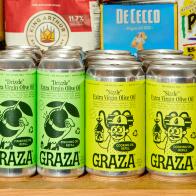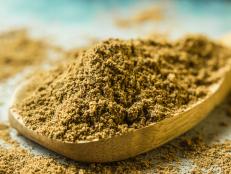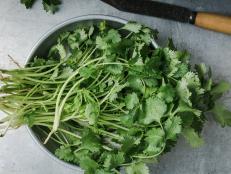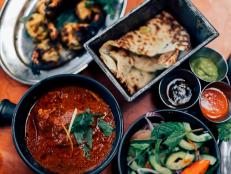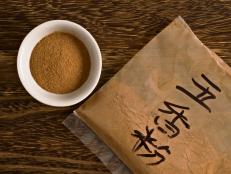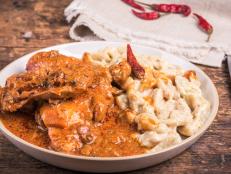What Is Za’atar?
Plus, make your own za'atar spice blend.

annick vanderschelden photography/Getty Images
By Layla Khoury-Hanold for Food Network Kitchen
Layla Khoury-Hanold is a contributor at Food Network.
What Is Za’atar?
Za’atar is a savory Middle Eastern spice blend made with dried oregano, thyme, sumac and toasted sesame seeds. Traditionally, za’atar is made with its namesake herb, also known as hyssop, which grows plentifully across the Levant. Sometimes, marjoram, dill, orange zest or salt are also added to the mixture, and the combination and proportions vary by region. In the Middle East, za’atar is used to top man’oushe, a chewy flatbread, served with oil and bread for dipping, or sprinkled on top of yogurt or sliced, fresh tomatoes and cucumbers.

bhofack2/Getty Images
What Does Za’atar Taste Like?
Za’atar has an earthy, herbaceous flavor profile that gets a burst of tartness from lemony sumac and a toasty crunch and nuttiness from the sesame seeds.

Candice Bell/Getty Images
How to Make Za’atar
It's very easy to make homemade za'atar. Here's what to do.
Step 1: Reach for the freshest ingredients.
Be sure to use the freshest dried herbs possible and make small batches to ensure the blend stays fragrant and fresh.
Step 2: Mix together the base ingredients.
To make homemade za’atar, combine crushed dried thyme, oregano, sumac and toasted sesame seeds. Many recipes combine 1 part of each of these ingredients, so the spice blend contains equal amounts of each--but feel free to adjust to your preference. Don't be afraid to play with the proportions.
Step 3: Experiment with other add-ins.
You can also experiment with adding dried marjoram, dill, orange zest or salt to the mix.
Step 4: Store the mixture in an air-tight container.
A rinsed and dried leftover herb jar or a small mason jar is the perfect container. Store the za'atar in a dry, dark space.

Andrew Purcell
How to Use Za’atar
Za’atar can be used as a seasoning, to finish dishes and as a condiment. Use za’atar anywhere you want to add or accentuate bright, herbaceous and earthy flavors, and in dishes that would benefit from a nutty, toasty crunch. Use it as a spice rub for grilled or roasted proteins including chicken, beef, lamb or fish. Za’atar is great on vegetables too. Sprinkle it on raw, sliced tomatoes or cucumbers, use it to season roasted vegetables or whisk it into an oil-and-vinegar dressing to dip romaine hearts into. Za’atar can also be mixed with olive oil as a dip for bread or to finish dishes, as with these Za’atar Chicken Thighs with Pearl Couscous (pictured above). You can bloom za’atar like you would other spices by adding them to warmed olive oil or butter—it’s ideal for finishing dishes and is especially nice drizzled over popcorn or avocado toast.
Recipes with Za’atar

This simple yet elegant chicken recipe proves that double the za’atar is twice as nice. Za’atar is employed first as a spice rub to bring a lemony, herbaceous pop to grilled chicken breasts, then as a finishing agent that complements a refreshing cucumber-watermelon salad bolstered with lemon and mint.

Heather Ramsdell, Food Network 2016
Za’atar’s aromatics shine through in this easy sheet pan supper to complement lemony, juicy chicken thighs, earthy chickpeas and sweet roasted carrots. Serve with warm pita to mop up the extra juices.

Halved carrots roasted with olive oil and za’atar until caramelized and tender make for a simple, crowd-pleasing side. We love how the sprinkling of za’atar lends a nutty earthiness that plays off the natural sweetness of the carrots.

Most za’atar spice mixes include oregano, thyme, sumac and sesame seeds, making them a great all-purpose savory blend. Here, za'atar imparts loads of flavor to a mixture of lemon zest, pistachio and panko, which coats mild halibut in a crunchy, flavorful crust.

Renee Comet
This simple, no-yeast bread recipe calls for a mix of whole wheat and bread flour to impart a subtle nuttiness and extra gluten, resulting in a chewy yet airy texture. The dough is finsiehd with a hefty sprinkling of za’atar and white sesame seeds which creates a crisp and flavorful crust. Try dipping warm slices into olive oil sprinkled with za’atar.
Related Links












